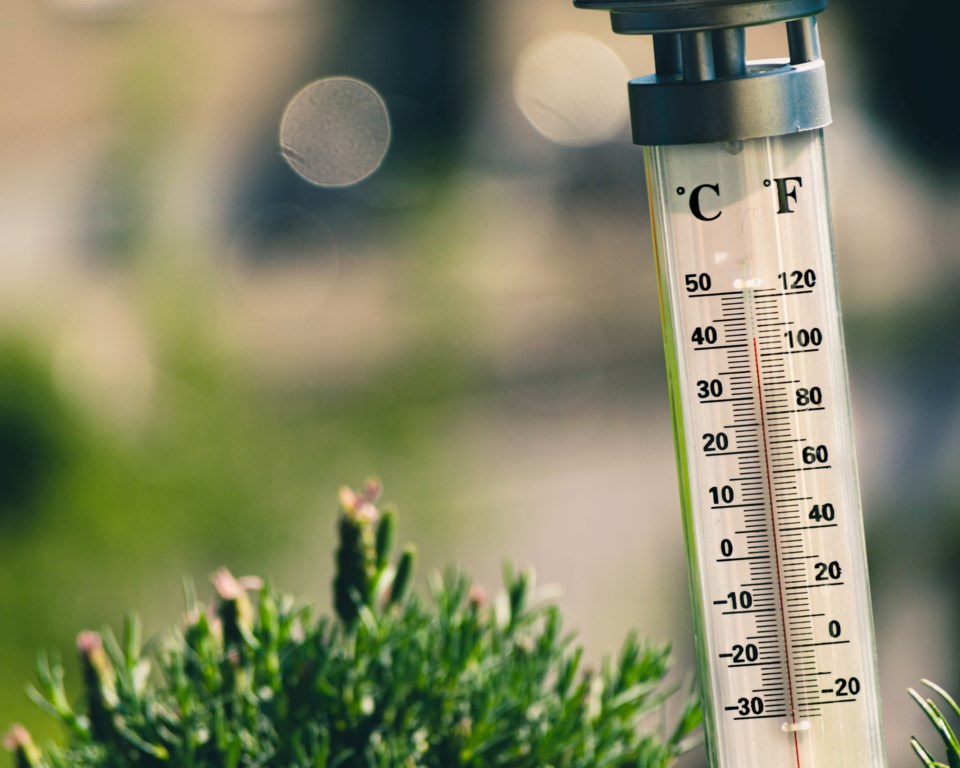Fruit is literally being cooked on the trees.
I don’t need to be convinced global warming is real, but hearing a farmer from Oliver in the Okanagan say that about his orchard had me staring at the kitchen radio in disbelief.
I know, I know, we can’t blame each and every heat wave or snow storm on global warming, but we have been told, repeatedly, to expect more extreme weather events. Here on the west coast that means wetter winters and drier summers.
I feel like I’m already seeing that.
Back in the olden days, say 10 years ago, the biggest threat to a camping trip was rain, now it’s heat, drought and wild fires.
My partner and I had planned to camp on Kootenay Lake, but even if we did manage to dodge the infernos on either side of the highway on our way out, I don’t know if we’d actually see the lake for all the smoke.
A couple of summers ago when a heat wave was frying much of Europe, I heard a woman talking about the need to name heat waves the way we name hurricanes and winter storms. It seemed like a kind of random idea, but her argument was that officially naming them (the colloquial name for that one was Lucifer) would encourage us treat them with the sense of urgency they deserve. It seems we humans need to personify (or demonize) things before we take them seriously.
Named or not, there is no doubt we need to take heat waves seriously. Just ask the loved ones of the 808 (and counting) people who died last month from what’s suspected to be heat-related ailments during the “heat dome.”
Just a note on that, kudos to the provincial coroner’s office for investigating each one of those deaths. Given many of those who died were elderly or had underlying health conditions, it would be easy to put their deaths down to that condition.
In fact, this is exactly what infuriated many people in Europe in 2019 — health authorities were reluctant to link the spike in sudden deaths to heat, while governmental authorities were reluctant to link the heat to global warming.
But we’re learning — slowly, slowly.
Prior to our “heat dome” last month, a heat warning on Environment Canada’s website would consist of a couple of paragraphs reminding people to drink water and seek shade, etc. This Friday and Saturday the temperature is expected to rise — albeit nothing like what we saw in June — yet that same website has pages of warnings and advice.
Still, however, much is being left up to individuals, which is fine, but governments also need to step up.
Frankly, it was pathetic that Richmond couldn’t get its act together to open cooling centres during the heat dome, despite the fact Vancouver Coastal Health told municipalities to wave social distancing regulations as the heat was a greater threat than COVID. The city claims it received confusing messaging, but come on.
We’ve been asking what’s planned for the upcoming spike. Again, no comment on cooling centres, although tents and misting devices have been set up at strategic spots.
I don’t mean to just pick on the city. All public authorities need to devise better responses. As a UBC researcher said on CBC, air conditioners, for example, should be deemed a medical device supplied to people at risk. (Anything to help thwart those jackals selling air conditioners for thousands of dollars on the internet.)
But let’s take a step even further back.
We’re in the middle of a climate emergency, but it doesn’t feel like it. We’re taking incremental steps when we should be running full tilt. A federal plan to phase out gas-powered vehicles by 2050 just doesn’t scream “emergency!” to me.
If we don’t start baking in a sense of urgency to every decision we make regarding health care, city planning, transit, baked cherries from the Okanagan could become the norm.



